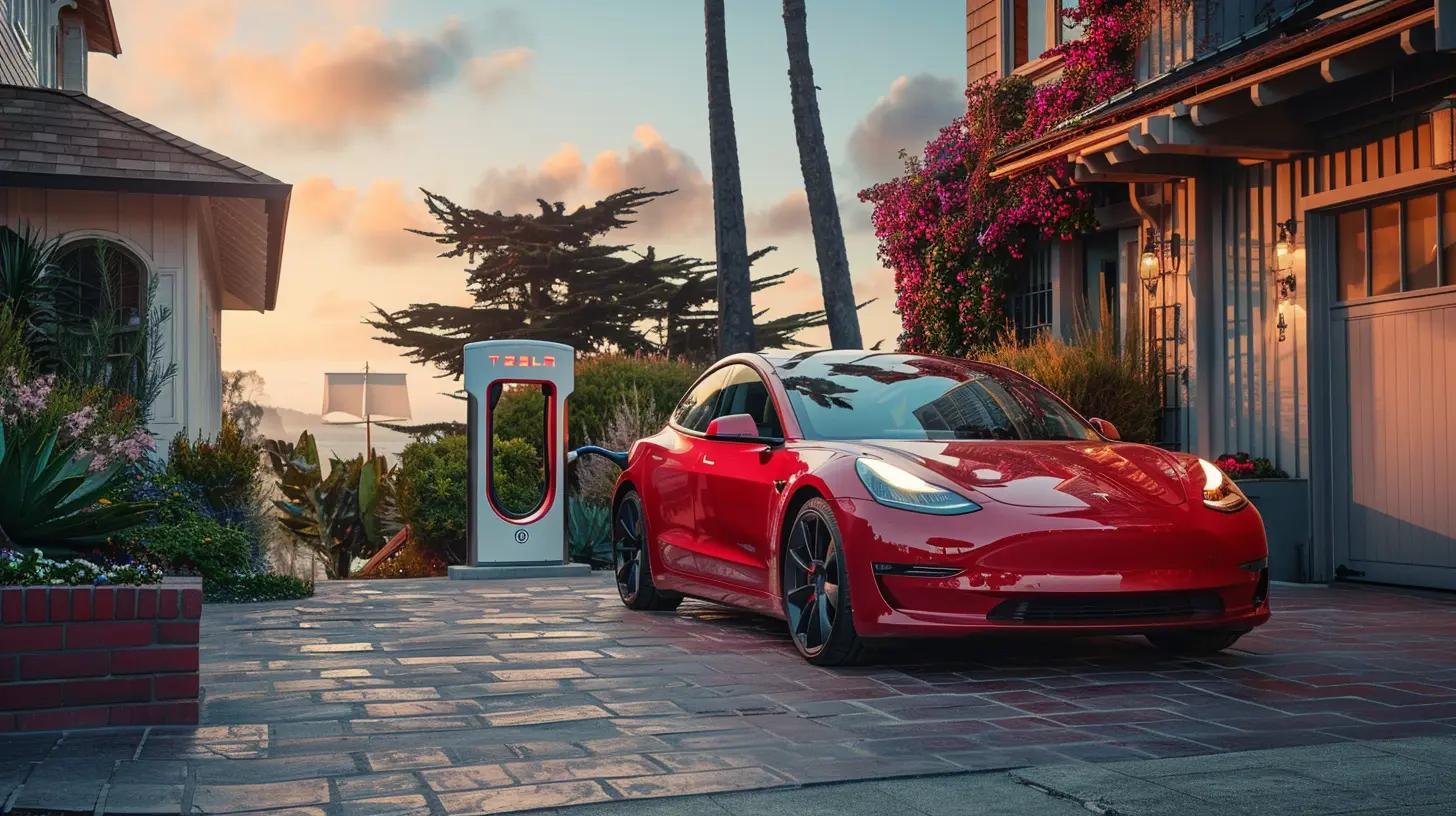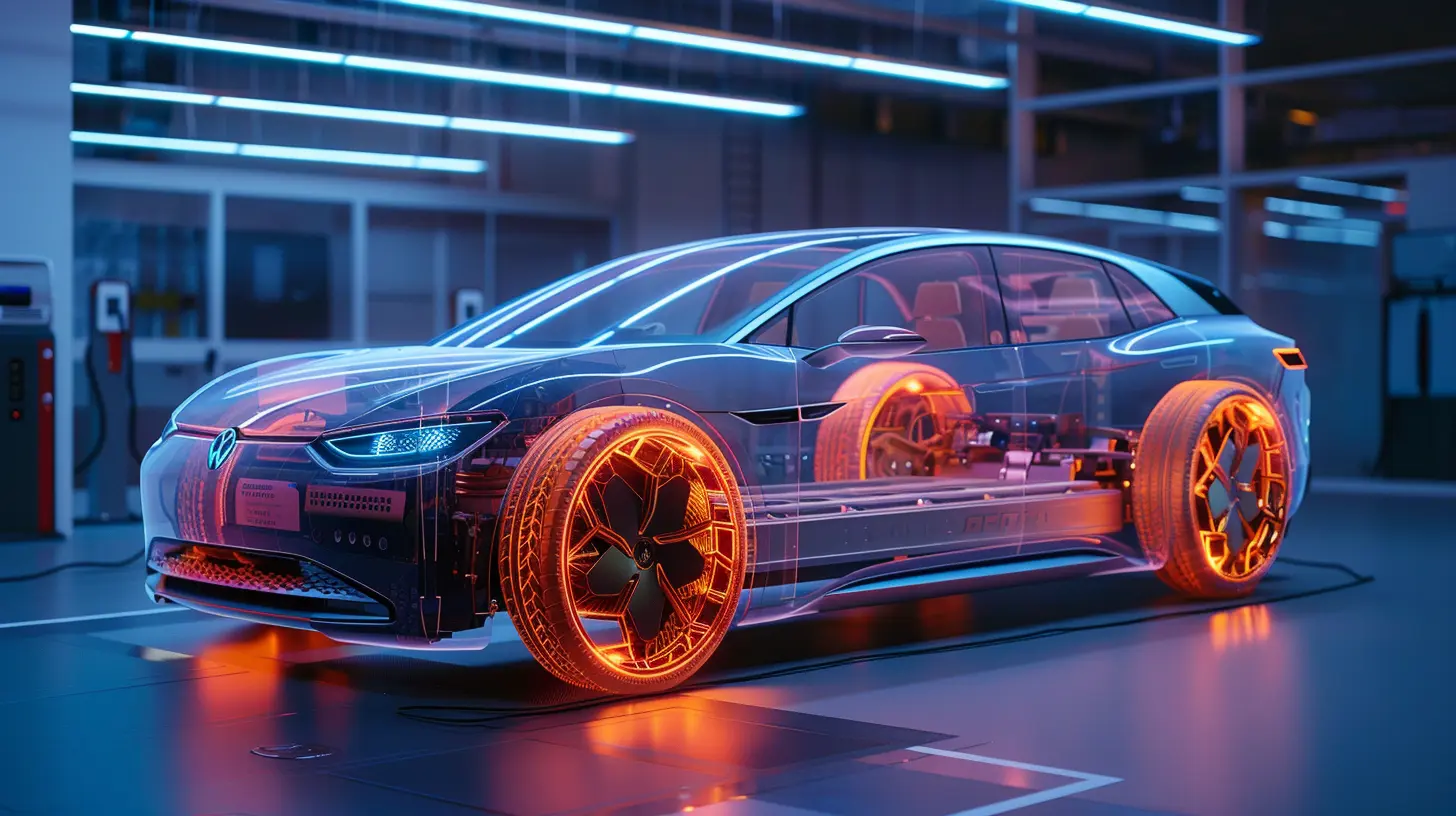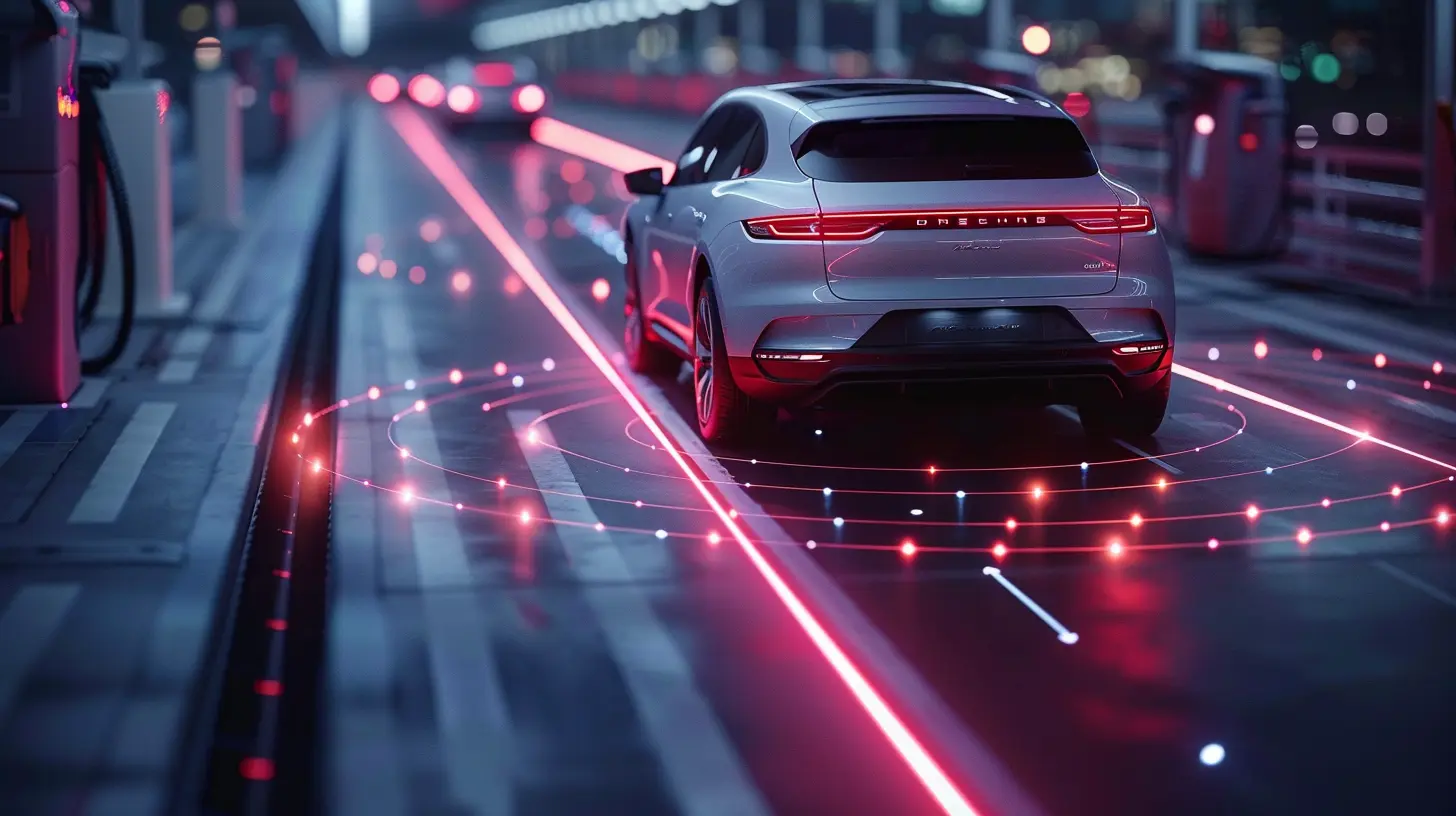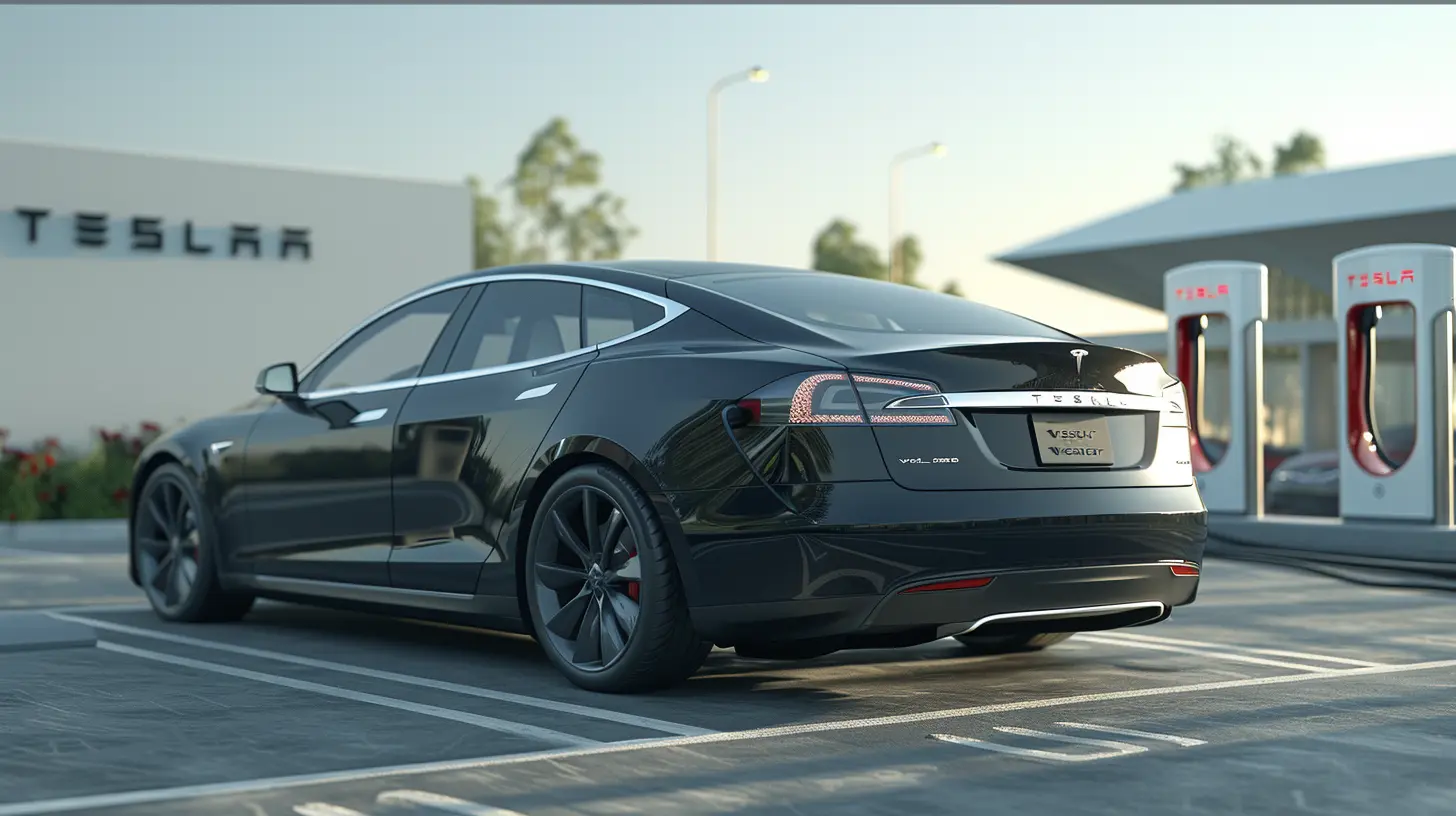Exploring Wireless Charging for Electric Vehicles
23 October 2025
Let’s be real—electric vehicles (EVs) are here to stay. And they’re not just trendy anymore; they’re practical, eco-friendly, and growing fast. But if there’s one thing that still makes people hesitate, it’s charging. The whole plug-in process, those tangled cables, the limited charging stations—it’s a lot to think about.
What if we told you that you could charge your EV just by parking it? No cables, no plugs, no fumbling in the rain. Sounds like science fiction, right? Well, welcome to the world of wireless charging for electric vehicles. And yes, it's as cool as it sounds.
In this post, we're diving deep into how wireless EV charging works, the pros and cons, the current tech behind it, and what the future might hold. Ready to plug into the future? (Okay, pun intended.)
What Exactly Is Wireless Charging for EVs?
So, you might be asking, “How does wireless charging even work?” Don’t worry—it’s not magic, but it’s pretty close.Wireless charging uses a concept called inductive charging. Imagine it as charging your phone on a wireless pad, just scaled up. You’ve got a charging pad on the ground and a receiver on the bottom of your car. When your car is parked over the pad, electricity flows between the two through electromagnetic fields—no cords needed.
To break it down:
- Transmitter coil: Installed in the parking surface.
- Receiver coil: Installed in your EV.
- Magnetic field: Transfers energy wirelessly from pad to car.
Pretty neat, right?
The Benefits of Going Wireless
Let’s talk perks. Why would anyone want to ditch the cable?1. Ultimate Convenience
This is the main draw. No more getting out, unwinding a dirty cable, plugging in, then reversing the whole thing. With wireless charging, just park and go do your thing. When you return, your car is ready to roll.2. Safer and Cleaner
Think about it—no exposed wires means no tripping hazards, no electrical risks, and way less wear and tear. It’s safer for pets, kids, and property, especially in public or shared spaces.Plus, cables in snowy, rainy, or dusty environments? They don’t last long. Wireless pads are built to withstand the elements.
3. Low Maintenance
Everything’s sealed. No moving parts, no rusted-out connectors—just solid, reliable tech. And because you’re not plugging and unplugging constantly, your car’s charging port also stays protected longer.4. Perfect for Autonomous Vehicles
Self-driving cars are already testing the roads and guess what—they can’t exactly get out and plug themselves in. Wireless charging is a no-brainer for a future filled with autonomous transportation.
The Not-So-Great Bits
Of course, nothing’s perfect (except maybe pizza...), and wireless charging comes with a few bumps in the road.1. Costs More—A Lot More
Installing a wireless charging system—both in the pavement and in your car—can get pricey. It's still an emerging technology, and like with all new tech, early adopters pay more upfront.2. Not as Efficient (Yet)
While the best wireless systems are closing the gap, you still lose more energy during wireless transmission compared to plugging in. That means slightly longer charge times and a bit more strain on the grid.3. Limited Compatibility
Not all EVs can use wireless charging yet. Some manufacturers are testing it, but we're not at the "one-size-fits-all" point. Plus, standardization is still developing.
How Fast Is Wireless EV Charging?
Okay, you’re probably wondering: “Is this thing slow?” And honestly, it depends.The charging speed varies based on the system and vehicle, but most current setups offer Level 2 charging speeds, around 7-11 kW. That’s similar to what you'd get from a home wall-mounted charger—great for overnight charging, but not exactly high-speed.
However, developers are pushing into high-power wireless charging territory. We’re talking 50 kW or more. That’s approaching the realm of DC fast charging—without the wires. Sweet, right?
Real-World Examples and Pilots
This isn’t just theory. Cities and companies are already trying this tech out in the wild.🔌 Oslo, Norway
Oslo is piloting wireless charging for its electric taxis. The goal: when taxis wait in line, they get topped off wirelessly. It reduces downtime and keeps the fleet moving efficiently.🚌 Public Transit Trials
Many cities are testing wireless charging for buses. Think about it—buses stop frequently and for long periods. Perfect fit! Pads can be installed at bus stops or depots, giving just enough charge to extend the ride.🏢 Home Installations
Yes, some high-end homeowners are already integrating wireless pads into garage floors. Companies like WiTricity and HEVO are working to make it more accessible—think of it like adding a wireless phone charger... for your garage.Future of Wireless Charging: Where Are We Headed?
Imagine this: you drive on a freeway, and your EV charges while you’re cruising at 65 mph. Sounds wild, but it’s already being tested.🔄 Dynamic Wireless Charging
Dynamic (or in-motion) wireless charging takes things up a notch. It installs coils in roads so your car charges as you drive. South Korea and Sweden have run pilot programs already. In the U.S., Michigan is paving the way (literally) to test wireless charging roads.This could be a game-changer—charging while driving would nearly eliminate range anxiety and reduce the number of charging stations needed.
🔋 Smarter Charging with AI
Some systems are integrating with apps and smart home tech. Picture this: your EV starts charging only when energy costs are lowest or when your solar panels are cranking. It’s about making charging intuitive and efficient.What About the Environment?
You might wonder—if the system is less efficient, doesn’t that make it worse for the environment?Good question. Yes, initial efficiency is lower, but the broader picture looks promising.
- 💡 Less energy wastage over time: As systems improve, the gap in efficiency is getting smaller.
- 🌱 More widespread EV adoption: Making EVs easier to charge = more people making the switch = less pollution.
- ⚡ Greener power sources: Pairing wireless charging with clean energy (like solar or wind) makes it truly sustainable.
So, while it’s not perfect yet, the long-term impact could be a net positive.
What’s It Like to Use Wireless Charging?
Let’s put it this way: if you've ever driven into a garage and just watched Netflix while your car charged, then you’re living the wireless dream.Users say the experience feels natural. You park, the system “sees” your car, and charging starts automatically. Most systems use apps to monitor progress, schedule charging times, or alert you when it’s done.
And there’s something really satisfying about never touching a cable again. You'll wonder why it wasn’t always this simple.
Should You Hold Off or Jump In?
So, should you wait to buy a wireless charger, or take the plunge?It depends on your needs:
- If you’re looking for maximum efficiency and affordability: Stick with a wired solution for now.
- But if you’re excited by convenience, future-proofing, and a cleaner aesthetic: Wireless is pretty compelling.
Just keep in mind that your EV must support it, and upgrades can be costly. For early adopters or those building custom homes, it can absolutely be worth it.
Final Thoughts: Charging Ahead with No Strings Attached
Wireless charging for electric vehicles isn’t just a cool idea—it’s a significant leap forward in making EVs more user-friendly, accessible, and maybe even a little fun. The technology is still growing, but honestly, it’s not a matter of “if.” It’s “when.”We’re standing at the edge of a huge shift in how we think about transportation—not just cleaner cars, but smarter, more seamless experiences. From smart homes to intelligent cities, wireless charging fits right in.
So maybe one day soon, plugging in will feel as outdated as flipping open a CD player. Until then, we’ll keep watching this space—and parking right where the magic happens.
all images in this post were generated using AI tools
Category:
Electric VehiclesAuthor:

Vincent Hubbard
Discussion
rate this article
1 comments
Charlotte Mullen
This article beautifully highlights the potential of wireless charging for electric vehicles. It's an exciting development that could enhance convenience and accessibility for many. Thank you for shedding light on this innovative technology and its impact on the future of transportation!
October 26, 2025 at 12:17 PM

Vincent Hubbard
Thank you for your kind words! I'm glad you found the article informative and exciting. Wireless charging truly has the potential to transform the future of transportation.

